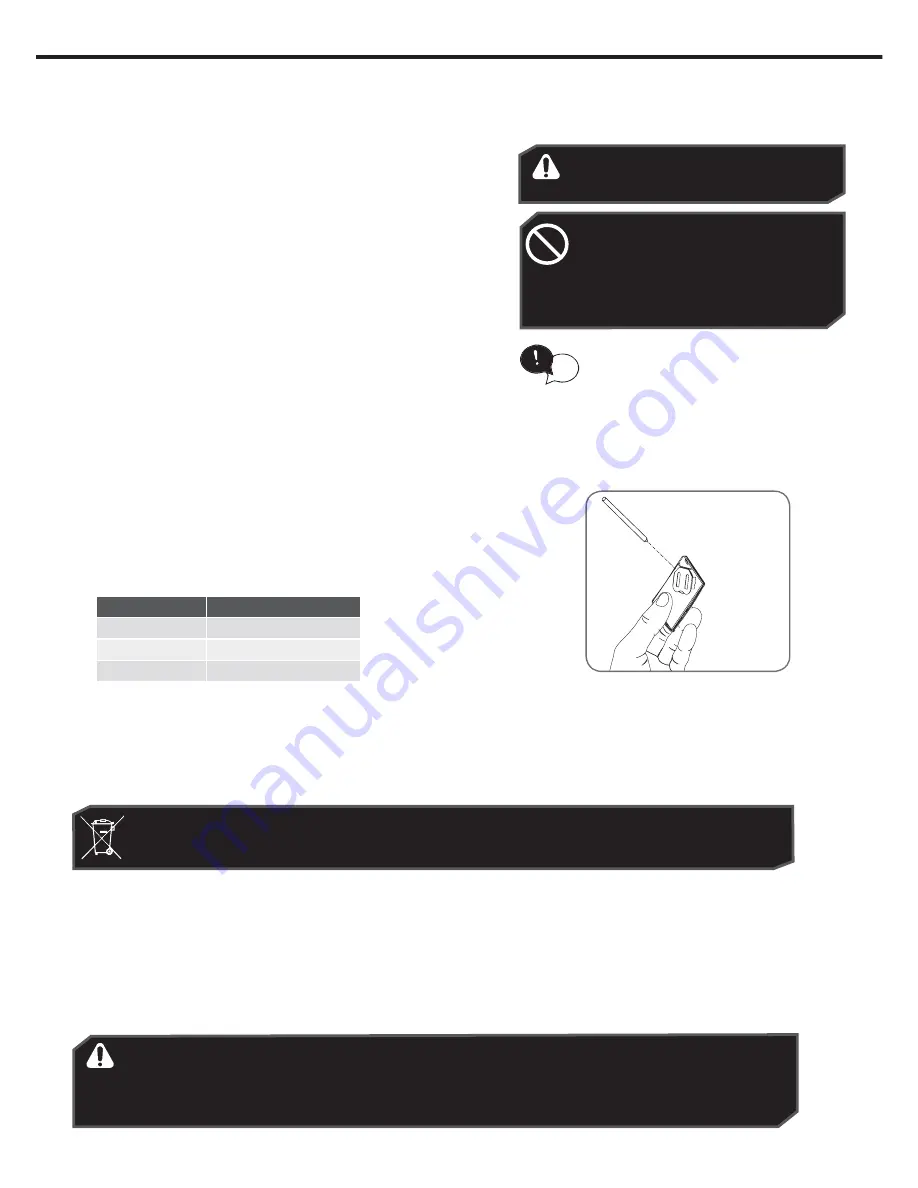
GDO-8 Instruction Manual
20
22. Maintenance
Door Maintenance
A poorly maintained door could cause fatal / serious injuries or damage
to property.
•
Frequently examine the door, particularly the cables, springs and
mountings for signs of wear, damage or imbalance.
DO NOT USE
if
repair or adjustment is needed since a fault in the installation or an
incorrectly balanced door may cause injury.
•
Fasterners: Check all screws, nuts and bolts to ensure they are
secure.
•
Spring Tension: It is natural for springs to lose tension. Should the
door become hard to operate or completely inoperative, contact a
door professional.
•
Guide Tracks: Clean the internal sections of the guide tracks every
3 - 6 months with a cloth dampened with mineral turps or methylated
spirits.
DO NOT DO IT YOURSELF:
WARNING! Failure to maintain your
garage door may void the warranty on
your garage door opener.
DIY
Door adjustments should only be
carried out by experienced persons,
as this function can be dangerous if
not performed under strict safety
procedures.
When batteries reach the end of their usual life in accordance with Australian Battery Recycling Initiative please follow the next
simple steps for protecting the environment. Refer to the Automatic Technology website for information on where to recycle
batteries in Australia.
DO NOT throw the batteries in municipal waste. This symbol of the crossed out wheeled bin
indicates that the battery should not be placed in the municipal waste. Check your local regulations
for appropriate disposal of the batteries.
Recycling all batteries will have other environmental and social benefits:
WARNING! Prior to disposal, recycling, or collection, all battery terminals must be securely
insulated with a non conductive material to prevent any two batteries from short circuiting
and generating heat during storage or transport. Battery terminals may be insulated with
electrical tape; or batteries may be individually packaged in a non conductive material
(e.g., plastic bag or original packaging).
24. Battery Disposal
Battery Type:
3V Lithium Battery CR2032.
•
To test the battery is working, press and
hold a transmitter button. Check Light
Status table to determine if battery needs
replacing
Light Status
Battery Status
Solid
OK
Flashing
Requires replacement
No light
Requires replacement
23. Battery Replacement
Use a pen
to push
the battery
down
through
the side
opening
to release
battery
Run the Safety Testing procedures
MONTHLY in Section 12 to ensure garage
door is fit for use.
tip
•
Use finger nails to separate
the transmitter casing to
expose circuit board.
•
Use a non-metallic object
(e.g. pen) to remove the
battery.
•
Some batteries are less toxic but hazardous for other
reasons. Lithium batteries can explode or catch fire in
landfill, while button cells are dangerous if swallowed
by children. Recycling offers a safe and environmentally
responsible solution for end of life batteries.
•
Battery recycling recovers non-renewable materials such
as lead, cadmium, stella, zinc, manganese, cobalt, silver,
plastics and rare earth elements.
•
Removal of batteries and other hazardous household
products from household waste facilitates the recovery of
organic materials through alternative waste technologies
such as composting. Batteries and heavy metals are known
contaminants in compost.
•
The community supports recycling because it reduces
waste to landfill and achieves environmental benefits.





































